IndiaWilds Newsletter Vol. 12 Issue XII
ISSN 2394 – 6946
Safety of Humanity Lies in Saving Forests
As 2020 comes to a close, people who were slowly taking steps to come out of their covid-19 induced incarceration indoors and travel again were jolted back to mother earth by the news of a new deadly strain of corona virus in UK. Several countries immediately stopped flight service to UK. People were ready to forget Covid-19 as a bad dream. They were emboldened by the news of several vaccines showing more than 90% success rate. People were ready to go back to their materialistic ways where they would continue to wage war against mother nature. Covid-19 strain in UK shows that we can’t simply move ahead and live our lives without bringing out systemic changes in the way we live. This reinforces the wise saying that you can’t hide your waste under your carpet. It will stink and hit back at you.
Broken Edifice:
We have cut open huge swathes of forests converting them to agricultural fields, human habitations, dams, canals and other projects; drained numerous swamps to convert them into cities; killed wildlife, consumed and traded their meat; we have devastated the pillars holding the natural world in balance. The complex web of inter-linkages between various species and natural systems have been broken.
In nature each species has evolved over millions of years to counteract the impact of other species including viruses. Pathogens jump to a species that is more numerous. Today we homo sapiens are more than 7 billion in population. We have virtually swamped the earth and in the process more easily come in contact with pathogens. And we humans don’t have defense against some of the viruses which are lurking in various wildlife species.
Zoonotic diseases:
Transmission of diseases from animals to humans can occur through various methods. One of the methods of Zoonotic diseases transmission can be from animals to humans via vectors like mosquitos who bite the animal and then humans. With clearing of trees and vegetation, the vector species like rats don’t have any biological predators like owls, shikras, eagles and snakes. Similarly, there are many insect species and mosquitos which proliferate and act as vector species for transmission of diseases from animals to humans. Some pathogens also transmit via air or water that has been contaminated by droplets from animals which contain the viruses. Sourcing water from the common pond used by animals or inhaling the air with droplets containing pathogens is another source. Bush meat is also a big source of zoonotic diseases. These days due to the internet bush meat is readily transported thousands of kilometers to different continents and consumed. These diseases can also directly and indirectly get transmitted to humans via touch or through other contaminated soil, vegetation etc.
Ebola virus disease (EVD) – a contagious, severe and often lethal form of hemorrhagic fever – was first recorded in 1976 in Africa. It had several deadly outbreaks and reached different parts of the world. Scientists studying the deadly Ebola virus disease (EVD) outbreak concluded that “there are serious shortcomings in capacity to detect, monitor, and respond to infectious diseases outbreak as they occur. Recent advances in diagnostics, risk mapping, mathematical modeling, pathogen genome sequencing, phylogenetics, and phylogeography have the potential to improve substantially the quantity and quality of information available to guide the public health response to outbreaks of all kinds.” (Mark E. J. Woolhouse et. al, Science Translational Medicine, 30 Sep 2015, Lessons from Ebola: Improving Infectious disease surveillance to inform outbreak management”) https://stm.sciencemag.org/content/7/307/307rv5.full
This resulted in scientists now engaged in monitoring the bats and other vector species in various sites in Africa to find out any new virus. Governments are also engaged in serosurvey to conduct disease surveillance to predict and contain any outbreak of disease.
Disease outbreak & Forest clearance:
Unfortunately, Governments, global institutions as well as people haven’t focused on the core issue causing zoonotic disease transmission to humans from animal species. In a 2017 study, scientists used remote sensing techniques and favourability modality centred on 27 EVD outbreak sites and 280 comparable control sites to investigate the association between deforestation in time and space with Ebola outbreaks in Central and West Africa. (Olivero, Jesús et al. “Recent loss of closed forests is associated with Ebola virus disease outbreaks.” Scientific reports vol. 7,1 14291. 30 Oct. 2017, doi:10.1038/s41598-017-14727-9). Scientists concluded that “outbreaks located along the limits of the rainforest biome were significantly associated with forest losses within the previous 2 years. This association was strongest for closed forests (>83%), both intact and disturbed, of a range of tree heights (5–>19 m). Our results suggest that the increased probability of an EVD outbreak occurring in a site is linked to recent deforestation events, and that preventing the loss of forests could reduce the likelihood of future outbreaks.”
Given this clear conclusion about Ebola outbreak occurring within two years of significant forest loss observed in rainforest biomes, Governments should be using data to analyse and pinpoint all the areas where forests have been lost either due to legal or illegal means and take actions to monitor the interactions of the locals with the forests and ensure sufficient mitigating steps being taken to reverse the forest loss.
Too often forest loss occurs due to forests being diverted for mining, dams, canals, railways, roads, setting up industrial units and for resettlement of people. Often there is illegal timber logging in forests as demand for wood has skyrocketed. In some cases, vested interests are known to burn down patches of pristine forests so that later they can claim the place to be devoid of wildlife and easily justify diversion for industrial or other non-forest use.
India beware:
In India today our Government appears to be more focused on diverting forests for industrial and other uses. From 1st January 2019 to 6th November 2019, Government had diverted 11467.83 hectares (114.68 square kilometers) of forest land for non forest use. In the month of March, when India was in the midst of a Corona virus induced lockdown, MoEF&CC modified the EIA (Environment Impact Assessment) norms for pharmaceutical companies to waive off the EIA requirement in the name of increasing our capability to manufacture medicines in view of the corona virus. As many as 100 projects were immediately permitted and many more lined up for permission.
India is ranked 168 out of 180 countries in the Global Environmental Performance Index and shares the 168 rank with Ghana. There are only 11 countries below it. Burundi, Haiti, Chad, Solomon Islands, Madagascar, Guinea, Cote d’Ivoire, Sierra Leone, Afghanistan, Myanmar, Liberia are below India. India is 93 in the Ecosystem Services index which measures tree cover loss, grassland loss and wetland loss. https://epi.yale.edu/epi-results/2020/component/epi
In the Terrestrial biome protection (national weights) category, India is ranked 145 out of 180 countries. This clearly shows India has a long way to go in protecting its wilderness areas and can also play host to an outbreak of virus.
As we are getting ready to step on a new year, it is important to reflect and correct the wrongs that we have done so that we can create a society that is more in sync with nature and reap its benefits. Else, we will can’t escape from the vagaries of nature inform of climate change induced extreme weather events like landslides, cyclones, flooding, heat waves as well as future pandemics. There is no way we can survive the wrath of Mother Earth if we continue to decimate our forests.
If we want to be safe, then we have to protect our forests.
Conservation News:
CPCB raises concern on Pollution and Frothing in Yamuna
6th December
CPCB has observed froth formation and increase in ammonia levels in river Yamuna because of discharge of untreated sewage, non-operation of existing Sewage Treatment Plants, improper functioning of Effluent Treatment Plants (ETPs) installed by the industries and Common Effluent Treatment Plants (CETPs) located on the banks of river Yamuna.
Monitoring of twenty two drains carried out recently, indicated that fourteen drains (Sonia Vihar, Najafgarh, Shastri Park, Shahdara, etc.) are found untapped, discharging sewage. While five drains are 100% tapped and no flow at downward of interception observed, two drains were found tapped but were overflowing into Yamuna river. One drain (drain no. 14) has no flow at all. Due to partially/untreated discharge of sewage and industrial effluent containing phosphorus, many times, foaming also is observed.
Taking cognizance, CPCB has issued directions to Delhi Jal Board to submit time bound action plan to ensure compliance with norms by STPs and that no untreated sewage is discharged to these drains.
Delhi Pollution Control Committee (DPCC) has been directed to take action against non-complying Common Effluent Treatment Plans (CETPs) and industrial units. Similar directions have also been issued to State Pollution Control Boards of Haryana and Uttar Pradesh.
In view of the importance of the issues, reminders have been issued today to concerned agencies to submit action taken report by 15th December, 2020.
CPCB monitors water quality of River Yamuna and drains discharging into the River. However, it is common knowledge that STPs and CETPs often discharge untreated sewage directly into the river to avoid incurring cost. Most of the times, during night the treatment plants are switched off to cut electricity costs and untreated sewage is discharged. If CPCB takes its role seriously without any compromise then the pollution problem can become much less. However, given the past track record of the state as well as central pollution control boards, the common man doesn’t expect much. Lets hope this time CPCB is going to discharge its duties most efficiently and in a proactive manner.
Air Quality Commission directs for 100 percent switching over of industries in Delhi to PNG
The Commission for Air Quality Management in NCR and Adjoining Areas reviewed the progress of switching over of Industries operating in Delhi to Piped Natural Gas with the Government of NCT of Delhi, GAIL and Indraprastha Gas Limited.
About 1644 of Industrial Units spread across 50 industrial areas in Delhi had been identified to switch over to Piped Natural Gas (PNG). Though sizeable number of Industries are using PNG, the Commission stressed the need to switch over to PNG by all identified Industries in Delhi considering the fact that industrial sector is one of the major contributors to air pollution in Delhi and National Capital Region. Indraprastha Gas Limited (IGL) and Gas Authority of India Limited (GAIL) were impressed upon to complete the pipeline network, metering and associated infrastructure.
M/s IGL, Delhi Pollution Control Committee and Government of NCT of Delhi were also asked to work in close coordination with the industrial units so as to target completion of infrastructure works and complete switch over to PNG, by all the identified industrial units in Delhi, by 31st January, 2021. DPCC was also directed to inspect and identify the industries using unapproved fuels and to take stringent penal action in case of non-compliances.
The smog in winter is a major problem in the National Capital region. Especially in view of the Covid-19, the impact of air pollution is going to be more harmful. So a speedy transition to piped natural gas would be better in the short run. In the long term, industries need to be moved away from residential areas and metro cities. The Government needs to do long-term planning of our major big cities and towns and ensure that industries move out into designated corridors. However that unfortunately is likely to remain as a piped dream.
Air Quality Commission directs strict enforcement of dust control measures to curb Air Pollution
Dust emanating from the construction and demolition activities continues to be a major source of air pollution throughout the year. Such activities generate significant amount of dust, adversely impacting the Air quality by raising PM2.5 and PM10 levels.
The Commission of Air Quality Management in Delhi-NCR and adjoining areas reviewed the deteriorating air quality situation and has directed strict enforcement of dust control measures to curb air pollution in Delhi-NCR. The Air Quality Commission said that strict action must be taken against violators of construction demolition waste rules and the guidelines. Commission’s direction came after it reviewed dust control measures for National Capital Region including NCT of Delhi. The body also issued statutory directions to Central Pollution Control Board and Pollution Control Boards and Delhi Pollution Control Committee to constitute teams for inspection and strict enforcement of dust control measures. The Commission also issued directions to levy environment compensation charge from violators and stoppage of work, prohibition of construction and demolition activities based on extent of violations.
In order to ensure strict compliance of Construction and Demolition Waste Management Rules notified by the Ministry of Environment, Forest and Climate Change and guidelines on dust mitigation measures for handling Construction and Demolition Wastes, the Commission has directed the Central Pollution Control Board (CPCB), State Pollution Control Boards (SPCBs) of Haryana, Rajasthan, UP and Delhi Pollution Control Committee (DPCC) will constitute surprise inspection teams and to furnish fortnightly inspection reports to the Commission regarding compliance of rules with respect to construction and demolition activities in the National Capital Region. We hope that the implementation of the directives of the Air Quality Commission is full proof. Generally due to inefficiency as well as vested interests, the construction lobby continue to illegally carry out demolitions and constructions so the air quality in Delhi and in the National Capital Region remains even worse than Beijing.
Ladakh’s Tso Kar Wetland Complex now a Wetland of International Importance
India has added Tso Kar Wetland Complex in Ladakh as its 42nd Ramsar site, which is a second one in the Union Territory (UT) of Ladakh.
The Tso Kar Basin is a high-altitude wetland complex, consisting of two principal waterbodies, Startsapuk Tso, a freshwater lake of about 438 hectares to the south, and Tso Kar itself, a hypersaline lake of 1800 hectares to the north, situated in the Changthang region of Ladakh, India. It is called Tso Kar, meaning white lake, because of the white salt efflorescence found on the margins due to the evaporation of highly saline water.
The Tso Kar Basin is an A1 Category Important Bird Area (IBA) as per Bird Life International and a key staging site in the Central Asian Flyway. The site is also one of the most important breeding areas of the Black-necked Crane (Grus nigricollis) in India. This IBA is also the major breeding area for Great Crested Grebe (Podicepscristatus), Bar-headed Geese (Anserindicus), Ruddy Shelduck (Tadornaferruginea), Brown-headed Gull (Larusbrunnicephalus), Lesser Sand-Plover (Charadriusmongolus) and many other species.
The aim of the Ramsar list is “to develop and maintain an international network of wetlands which are important for the conservation of global biological diversity and for sustaining human life through the maintenance of their ecosystem components, processes and benefits”.
Wetlands provide a wide range of important resources and ecosystem services such as food, water, fibre, groundwater recharge, water purification, flood moderation, erosion control and climate regulation. They are, in fact a major source of water and our main supply of freshwater comes from an array of wetlands which help soak rainfall and recharge groundwater. Wetlands hold lot of carbon and those can get released into the atmosphere when they are filled up with mud and debris and reclaimed for human habitations.
The Ministry of Environment, Forest & Climate Change has said that it would be working closely with the UT Wetland Authority to ensure wise use of the Tso Kar wetland complex. We hope MoEF&CC stays true to its words as most of our Ramsar sites are facing lot of neglect and anthropogenic challenges. Recently Sambhar Lake in Rajasthan was in news due to thousands of birds dying. Central Govt. had planned to allow seaplane landing and takeoff in Chilika lake in Odisha which would have threatened the ecological fragility of the lake. Fortunately Odisha Government due to public pressure raised its voice against the disastrous project and the seaplane project was withdrawn. Keoladeo Ghana in Rajasthan often faces challenge as the canals supplying water are blocked by the locals and hence birds don’t get the fish to survive. In many years the bird nesting is affected due to paucity of water. Sundarbans wetlands is facing huge anthropogenic challenges. People are reclaiming the land and concretising due to population growth. There is also poaching of prey species like wild pigs and deers. Salinity is also increasing. So simply naming a wetland as Ramsar site doesn’t automatically protect and resolve the ecological challenges faced by the place. Government has to show the resolve to walk the talk.
Equipment Discussions:
Zoom Am7 Mid-Side Stereo Microphone for Android
Leica Introduces SL2-S Mirrorless Hybrid Camera
Natural History
COUNTRY NOTEBOOK: M. Krishnan: ‘Spring in the jungle‘ shared By Saktipada Panigrahi
https://www.indiawilds.com/forums/showthread.php?8852-Country-notebook-m-krishnan&p=58194#post58194
Photography Tips – Learning Exposure
To make photography learning easier, we are creating a photography tutorial video series. The first part of photography tips is on learning exposure. Check it out in this link: https://youtu.be/PT3vvNIJx1g
Wildlife Photography
Tiger by Sabyasachi Patra
https://www.indiawilds.com/forums/showthread.php?19750-Tiger-in-Sunlight-and-shadows
Male Lion Tailed Macaque by Shyamala Kumar
https://www.indiawilds.com/forums/showthread.php?19760-Mountain-Man
Pond Heron by Samrat Sarkar
https://www.indiawilds.com/forums/showthread.php?19761-Pond-heron
Yellow-headed Wagtail by Mrudul Godbole
https://www.indiawilds.com/forums/showthread.php?19764-Yellow-headed-Wagtail
Peregrine Falcon by Murugan Anantharaman
https://www.indiawilds.com/forums/showthread.php?19745-Peregrine-Falcon
Green Bee eaters by Abhirup Dutta Gupta
https://www.indiawilds.com/forums/showthread.php?19772-Green-bee-eaters
Mayfly by Arun Acharjee
https://www.indiawilds.com/forums/showthread.php?19737-Resting-Mayfly
Mantis by Prajwal Ullal
https://www.indiawilds.com/forums/showthread.php?19748-A-clich%E9-d-mantis-frame
With this issue we complete 12 years of uninterrupted publication of IndiaWilds Newsletter. A brown winged kingfisher from Sundarbans adorns the Coverpage of this issue.
There was a time when man used to relax and rejuvenate in the tranquility of wilderness areas and rejoice in the beauty of its denizens like the brown-winged kingfisher which adorns this issue. The beauty of nature also hides an ugly truth that man’s relentless assault on our wilderness areas is resulting in pandemics, higher carbon dioxide in air and the consequent climate change. In these last few days of the year 2020 we hope that people spend some time in rethinking our disastrous anti-environment lifestyles and adopting a greener way forward.
I look forward to your inputs and support in preserving the last tracts of wilderness and wildlife left in our beautiful country and raising awareness about it. For other interesting articles and images check –
http://www.indi
To post in the IndiaWilds forums, you can register free of cost using your Full Name as user id at:
http://www.indiawilds.com/forums/register.php
If you are already a member of IndiaWilds and have forgotten your user id and/or password you can mail to:
administrator@indiawilds.com
Regards,
Sabyasachi Patra
Profile | Contact Us | Facebook | Diary | Equipment reviews | Forums | IndiaWilds You Tube Channel
Please post your views and feedback in the comments below.
- GoPro Hero 12 Black - 6 September,2023
- Leopards: The Last Stand - 2 July,2023
- Drifting in the Waters of Sundarbans - 26 March,2023

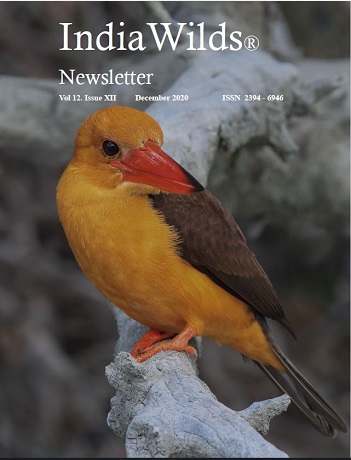


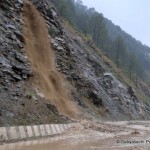
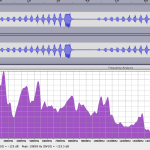
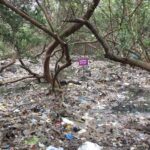




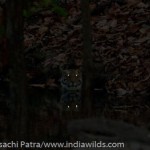



Leave a Reply